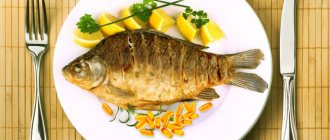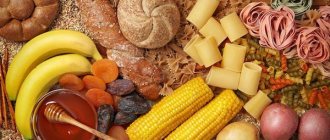Fiber (or dietary fiber) is a component of plants that cannot be digested in the human stomach. Despite this, fiber plays an important role in the metabolic process - both for digestion and for maintaining normal blood sugar and cholesterol levels.
Foods rich in fiber primarily include grains and plant stems, but there is also plenty of it in nuts, vegetables and various grains. Among other things, eating fiber-containing foods is beneficial in terms of the presence of vitamins, minerals and natural antioxidants.
What is fiber?
This is a special type of carbohydrate called dietary fiber that is not digested by the human body. When they enter the stomach, they are transformed into sugar molecules, do not decompose, and are excreted from the body.
Fiber normalizes blood sugar, which has a direct effect on feelings of satiety and hunger. Thanks to these special carbohydrates, food moves through the gastrointestinal tract (gastrointestinal tract). A deficiency of dietary fiber in the body causes constipation and metabolic disorders.
Fiber, what products contain and reviews, in Sergei Agapkin’s program “about the most important things”
Fiber-rich foods
The most fiber-rich food product is bran - essentially, it is the ground shell of grain. Next on the list are seeds and nuts—their inner part is soluble fiber, the outer part is insoluble. There is also a lot of dietary fiber found in all types of legumes, seeds and nuts:
Bran
Bran is the leader in dietary fiber content. They contain fiber up to 45% by weight. They are a ground shell of grains of various cereal crops (wheat, rye, oats and even rice). It is important to remember that being a wheat processing product, bran usually contains gluten.
// Gluten - what is harmful to the body?
Chia seeds
Chia seeds contain soluble fiber, which absorbs liquid like a sponge; chia contains more than 30% of its weight. Note that flax seeds also have similar health benefits - they contain up to 25% soluble dietary fiber.
// Chia seeds - what are the benefits?
Cereals
Each of the cereal crops has its own characteristics. For example, oatmeal contains beta-glucan, which normalizes blood sugar levels and reduces hunger. Bulgur contains the most fiber (almost 20%) and is the healthiest version of wheat.
// Bulgur is a grain with a low glycemic index
Pseudograins
Formally, buckwheat, quinoa and millet do not belong to grain crops. These are pseudocereals - essentially, they are plant seeds. They usually contain from 10% to 15% dietary fiber - this means the weight of dry cereal before cooking - there is less of it in porridge.
// Boiled buckwheat - calorie content and composition
Legumes
An example of a healthy legume is lentils, which contain not only 10% fiber, but also 25% vegetable protein. Among other things, lentils, peas and soy are also high in fiber and have a low glycemic index.
// Lentils - composition, benefits and harm
Dried mushrooms and dried fruits
The high fiber content of dried mushrooms and dried fruits is explained by the mechanics of production. Since the water is literally dried, the remainder of the dry weight is made up of simple carbohydrates (up to 60-70% of weight) and coarse dietary fiber (10 to 12%).
Nuts
The general rule of thumb is that the fattier the nut, the more fiber it contains. An example is macadamia nuts and pistachios - leaders in both calorie content and the amount of plant fiber. It accounts for 10% of the weight. In other nuts - less.
// Macadamia nuts - what are the benefits?
Vegetables
Strictly speaking, vegetables do not contain so much plant fiber in terms of weight - about 2-5% of weight. However, the average serving of vegetables usually weighs more than the average serving of grains. In addition, the rhizomes contain more indigestible carbohydrates.
// Vegetables - carbohydrate and fiber content
Daily fiber requirement
Adults and children, according to nutritionists, require about 20-30 g of dietary fiber daily. The diet of the average person, as a rule, does not include products that can cover this standard. Typically, people at any age consume a maximum of 15 g of fiber per day.
Physical activity increases the need for dietary fiber. For athletes involved in strength training, the daily figure increases to 38-40 g. This is due to an increase in the volume and calorie content of food.
Norm per day
It is recommended for an adult to consume 25-30 grams of plant fiber per day. For people actively involved in sports, this norm can be increased to 50 grams per day (due to an increase in the amount of food consumed). For children, the daily dosage of fiber is 10 grams + 1 gram for each year of the child’s life.
It is important to get all types of dietary fiber daily: soluble, semi-soluble and insoluble.
People suffering from colitis, enterocolitis, as well as gastritis or stomach ulcers are not recommended to consume fiber during an exacerbation. It is also prohibited for diarrhea until normal stool is restored.
Why does modern man experience fiber deficiency?
The reason lies in the diet, which consists of sweets, snacks, products made from refined flour, white rice as a side dish, packaged juices and other products that are practically devoid of vitamins and fiber. It is impossible to compensate for this deficiency by taking complex vitamins and synthesized fiber.
If there are no vegetables on the menu, and fruits are consumed in candied or other forms with fast carbohydrates, this negatively affects health and increases the risk of developing diabetes, cardiovascular diseases, and obesity. This can be avoided by eating natural foods, which form a healthy and balanced diet.
Food additives and food allergies
People who are allergic to high-fiber foods have difficulty getting enough fiber. They should talk to their doctor about other sources of fiber that will not cause an allergic reaction. In some cases, fiber supplements are recommended if a person has constipation or problems passing stool. Pharmacies sell dietary supplements such as Metamucil, Citrucel and Fibercon. These foods do not provide the same levels of vitamins and nutrients as natural high-fiber foods, but they are helpful when you can't get enough fiber from your diet.
People can increase their daily fiber intake by making small changes:
- Eat fruits and vegetables with the skin on, as the skin contains a lot of fiber.
- add beans or lentils to salads, soups and side dishes
- replace white bread and pasta with whole grain options
- eat 4.5 cups of vegetables and 4.5 cups of fruit every day
Eating too much fiber can cause bloating, gas, and constipation. These side effects may occur if a person consumes more than 70 grams of fiber per day.
Which foods contain the most fiber?
Legumes, Turkish and regular peas, whole grain wheat flour, bran and avocado contain about 10-15% of dietary fiber from their own dry mass. A small portion of any of these products provides about 5-10 g of this carbohydrate.
Fiber comes from lettuce, cabbage, cauliflower, unpeeled potatoes, sweet potatoes, corn, broccoli, pumpkin, carrots, green beans, asparagus, whole wheat pasta, pears, bananas, apples, strawberries, blueberries, oranges, raisins. , mango, nuts.

Product #5: beans

When it comes to high-fiber foods, beans likely come to mind. And this is not in vain. 1/2 cup of navy beans contains 7 grams of fiber, which is 25% of your daily value!
Black beans, dried pinto beans, garbanzo beans and chickpeas, all members of the legume family, are also incredibly high in fiber.
Black beans are used primarily for making side dishes and bean burgers, while chickpeas, well roasted and moderately seasoned, make an excellent crunchy snack. You can also add beans to salads, first courses and various sauces.
The main advantage of the described product is its high protein and iron content, which helps fight such a common disease as anemia today. Beans can also reduce levels of low-density lipoprotein or “bad” cholesterol.
Proper consumption of fiber
Excess fiber also has its negative consequences. Eating a lot of dietary fiber can cause bloating. This particular carbohydrate reduces the absorption of nutrients needed by athletes dieting to gain muscle mass.
The daily dose is best consumed in several doses:
- 5 g at breakfast - porridge or muesli;
- 10-15 g for lunch - legumes or brown rice, fruit;
- from 10 to 15 g at dinner - avocado, green vegetables.
Menu may vary. The main thing is to follow the recommended norm.
The benefits and harms of fiber in nutrition
The standard human diet is deficient in fiber. Residents of megacities suffer especially, as they are forced to eat high-calorie foods on the go that contain little dietary fiber.
Therefore, the consumption of foods rich in cellulose should be welcomed. There is little risk of consuming more fiber than required. But uncontrolled, targeted use can be harmful when high-calorie nutrition is necessary - pregnancy, breastfeeding, physical overload.
Fiber Content Tables
The tabular data is based on “ideal indicators” and cannot be perceived as a source of 100% truthful information. The amount of dietary fiber depends on the growing method used and further preparation. Cooking softens the fiber, making it easier for the body to digest and absorb this carbohydrate.
Not all tables are reliable. Many places grapefruit at the top of the list of fiber sources. One hundred grams of fruit contains a maximum of 1.5 g. It is better to focus on which foods have more fiber than just by numbers.
| Products, 100 g dry | Cellulose |
| Bran | 40-45 g |
| Flax-seed | 25-30 g |
| Dried mushrooms | 20-25 g |
| Dried fruits | 12-15 g |
| Legumes (lentils, beans, chickpeas, etc.) | 9-13 g |
| Whole wheat bread | 8-9 g |
| Various berries (blueberries, lingonberries, etc.) | 5-8 g |
| Avocado | 7 g |
| Sweet fruits (peaches, oranges, strawberries, etc.) | 2-4 g |

Are additional fiber sources needed?
The diet of many people, especially urban residents, contains very little fresh vegetables and fruits, as well as whole grains - the main sources of fiber. It includes meat and processed products such as white bread, rice, pasta, buns and sweets.

There is not enough plant food on the menu, and a small part of it is subjected to processing that reduces the fiber content - boiling, stewing, squeezing juice. In this case, the use of additional sources is justified.

Bran contains a lot of fiber. These are the remains of the grain shell, a by-product of flour milling. In 100 g of dry mixture there are up to 45 g. Bran is rich in B vitamins and minerals (potassium, magnesium, zinc, selenium, etc.). You can buy them at a pharmacy or supermarket. Wheat, rye and oatmeal are usually found on sale. The latter have finely granulated fibers and are more tender because they contain more soluble fiber. In addition, oat bran contains beta-glucan, a polysaccharide and natural prebiotic that strengthens the immune system.

It is important that the product is not subjected to any processing (steaming, granulation), because then it loses its beneficial properties. It is better to take bran without additives such as salt, sugar and others.











